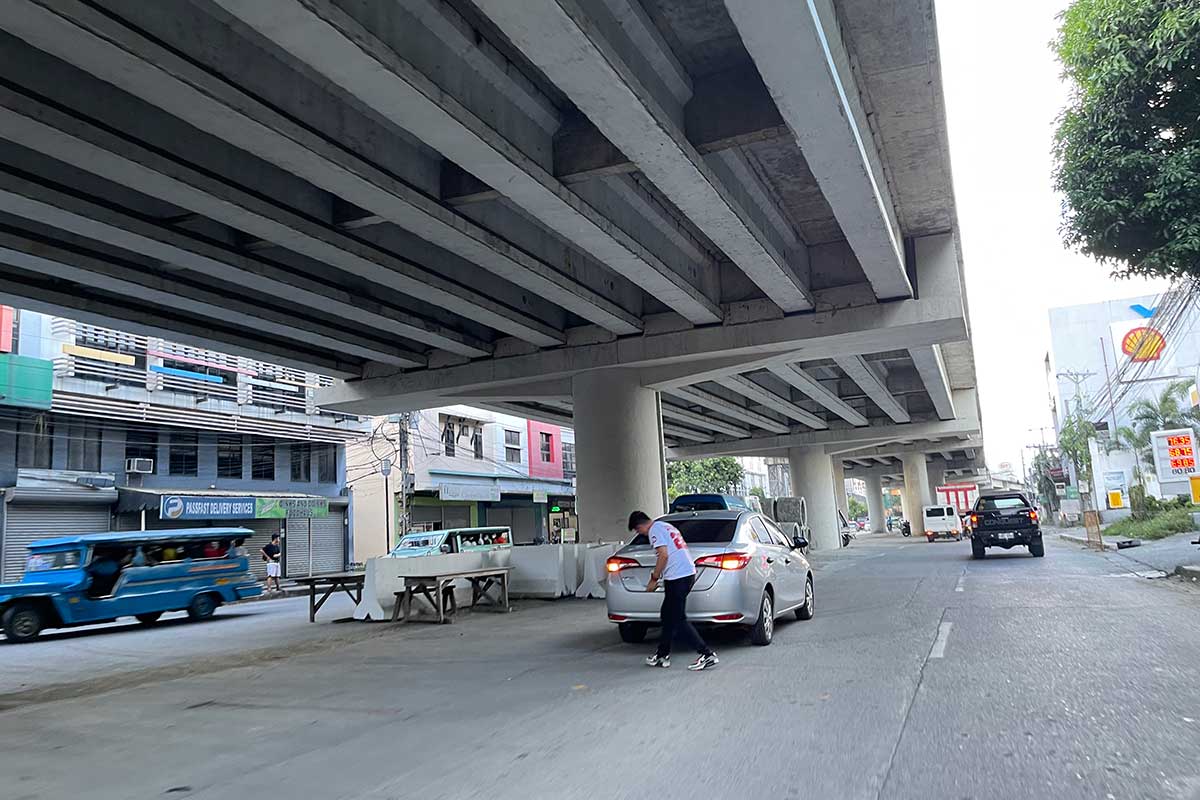
By Francis Allan L. Angelo
With public safety on top of their minds, the Department of Public Works and Highways (DPWH) regional office 6 decided to temporarily close the P680-million Ungka II flyover linking Jaro, Iloilo City and Pavia, Iloilo due to “strange structural” behaviors.
DPWH-6 Assistant Regional Director Al Fruto told Daily Guardian in a phone interview on Friday that the temporary closure will start at 12 pm on Sept 18, 2022.
The purpose?
It is part of the investigation into the “distress,” “vertical movements” and other structural behavior they observed since the flyover was opened to traffic in June 2022.
The move came after DG reported early this week on the “wavy” and purported poor workmanship of the over P680-million project facilitated by former Senator Franklin Drilon.
The Ungka II flyover is just one of the four vehicular flyovers being constructed on the main roads of Iloilo City and the province.
The others are the P560-million Aganan flyover in Barangay Aganan, Pavia; the Jibao-an flyover along the Iloilo Circumferential Road-Mandurriao-San Miguel Road section in Mandurriao district; and the Buhang flyover along the Iloilo Circumferential Road-Iloilo-Capiz Road (new route) section in Jaro district.
Fruto confirmed that they observed certain “structural behaviors” in the flyover when it was opened in two phases on June 30 and Sept 6, 2022.
“We observed movements or vertical displacements, that’s why we monitored if the movement progresses and will influence the physical appearance of the structure. The safety of the motorists and commuters is paramount in this case, thus the decision to close the flyover in the meantime,” he added.
The DPWH official said they are not taking chances even if there is only minimal progression in the so-called vertical displacement.
“If naga-progress ang movement bisan minimal at 2 to 3 millimeters nga vertical displacement, we have to continue observing the bridge without load or traffic to see if it continues to move.”
The closure will give DPWH engineers the chance to observe if the movement continues even if the flyover is unused.
“Since it was opened beginning July to September, we observed some manifestation. The decision is to temporarily close to further observe the structural behavior, particularly the manifestation of distress and its effect on the physical aspect of the project,” Fruto said.
DPWH engineers will also check the foundations, girders and other parts of the flyover in their investigation which is a mix of visual and scientific approaches using some instruments.
Fruto said they noticed that there was not much displacement in the structure even during heavy traffic flow in the morning and the afternoon. But come late evening and early morning, they noted progressions in the vertical movement.
They suspect that heavy or overloaded vehicles passing through the flyover late at night might be a factor in the “vertical movement.”
“To make sure of our observations, we have to close the bridge for seven days to find out if it will still move even without traffic load. As of now, we cannot conclude yet but we are confident that the matter will be addressed through engineering intervention,” he said.
Fruto assured that the closure will not exceed seven days as they will expedite their probe and come up with a comprehensive report by then.
The flyover is still the responsibility of the contractor, International Builders Corp. (IBC) as DPWH only paid 56 percent of the contract price.
“The accomplishment is over 90 percent, but we only paid over 50 percent as of now. Based on this, DPWH still has holdings on the contractor for whatever concerns that will arise. Even after the project is turned over to us, there are still guarantees and warranties as to the culpability and liability of those involved in the project, particularly the contractor,” Fruto said.


















